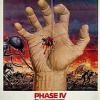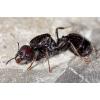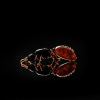With my ants in hibernation now and with anticipation of catching more Queens next spring, I've wondered if anyone has tried to capture smaller colonies (or queens seeking a place to found her colony) by placing habitable environments for them to find and move into?
If someone placed discretely hidden but accessible test tubes with cottoned water reservoirs would it be likely that a queen would find it after a nuptial flight and use it?
I figure I can find some small plastic box or enclosure and make a bunch that I can spread around in the spring and check up on them once in a while especially after nuptial flights. I'd also include a short length of tubing so that it would appear to be safer to use. If a piece of sponge is used for hydration and a part of the sponge is left exposed at the top, then it may even be self hydrating to a point.
Thoughts?
- Formiculture.com
- Forums
- Gallery
- Members
- Member Map
- Chat



















